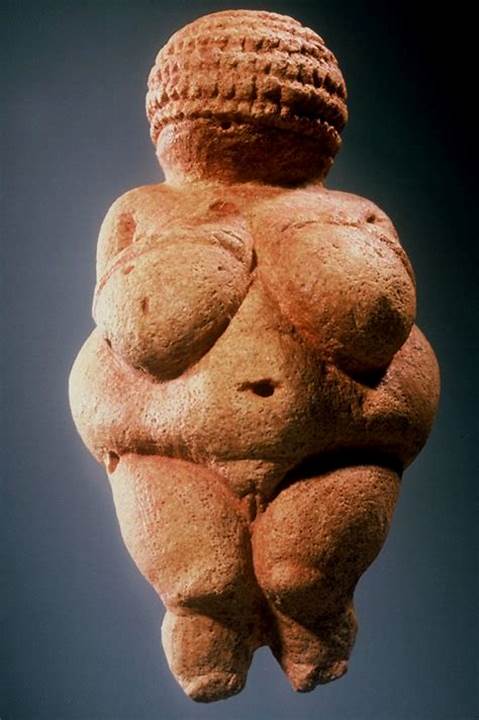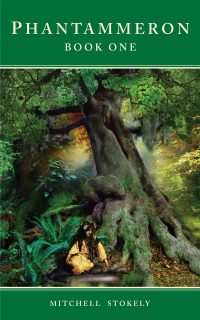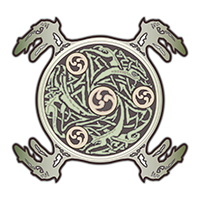One of the fascinating discoveries I have made as an amateur cultural sleuth and mythologist is the hidden archetypes of the old Earth Mother – a spirit our ancestors believed in for thousands and thousands of years prior to the advent of Greek, Roman, and Modern European civilizations took root.

The Earth Mother in Western Culture is critically important. Her symbols and Holidays reverberate throughout today’s culture. They remain unknown to us, and yet permeate not just Modern religious thought and philosophy but how we view each other, the sexes, our children, our entertainment, story telling, and the meaning we give to life itself.
In my search for this illusive archetype it’s become clear that her presence is deeply rooted in a Northern Hemispheric ritual of the return of the sun and it’s cyclical death in the Winter Solstice around Christmas. As a personification of the Earth itself, the Earth Mother represents the Soul of the World. And it’s her metaphorical and mythical control over that and the play of light and dark, good and evil, spirit and flesh that’s portrayed through her power over the Earth and her diametric sons who battle over its seasons.
I believe there are few myths and fairy tales left to light a path to her understanding. With the layers and layers of patriarchal war-like cultures that invaded Europe from the east the past 3000 years, much of what she represented for the Celts was obliterated. We know the Roman invasions in Britain and France, much of the core of what the Earth Mother represented was destroyed. The ancient groves of the Druids and Witches was cut down. And what remained was indoctrinated into current religious practices.
But some profound references have yet remained of what and who she was, what the seasons represented in portraying her secret truths, and how our Western ancestors used her spirit in explaining the meaning of the cycle of the sun and moon, and the cycle of life and death itself.
Archaeologist Marija Gimbutas has talked about archaeological evidence for the Earth Mother or ‘Animal Mother’ as a pagan religious expression of our ancient ancestors in Europe, much of which predates the patriarchal religions we have today by 100,000 years. It’s fascinating as carbon dating shows these Earth Mother pagan relics continued for tens of thousands of years before Greece and Egyptian cultures. It shows the “Goddess” predates later evolved religions and so formed the foundation for our Western culture as it exists today.
As I mentioned my own research shows the belief in the ‘Goddess’ was in fact much older, and tied to the movement of the Earth and Sun, the Earth Mother giving birth to the sun, her own son, symbolically after the Winter Solstice in Northern Europe symbolically.
I talk about the Celtic Earth Mother in my YouTube Mythopoeia lectures because I’ve seen these Earth Mother symbols over and over again in American images, entertainment, and holiday symbolism, though none of us see or recognize them. But I love Marija’s work because she exposes the archaeological evidence of the Paleo/Neo lithic Goddess symbols which she too says “until recent” times was pervasive in our Western European culture.
In the 13th century an Icelandic poetic wrote down the last relics of an ancient Viking culture, the Prose Eddas. From these and other ancient manuscripts have come many treasures of Western culture and pre-Christian mythology.
The story of Frigga (Frig) and her son Baldur found in the Prose Edda is, I believe, one of many critical references to the quintessential story of what Western European Earth Mother cultures believed. Why is that important you ask? Because her story, like theirs, is repeated thousands of times in current novels and movies….the old tale of the woman with two lovers, where the hero fighting for her love and the world perishes in his pursuit of his victory. That is the Earth Mother take retold millions of times today unknown to the writers who still repeat them.
In the tale Frigga has a son banned Baldur, his named translated meaning “shining one”. He represents the male personification of the sun itself, the one who returns each spring to bless the Earth with his life-giving light.
In the Norse version, Baldur has a dream foretelling his own death. It’s then his mother Frigg comes forward to subtlety decide not just his birth, but his death and resurrection. This then is the power of the Earth Mother, of the eternal feminine power, that manipulates the male persona over and over in the many versions of this tale. Baldur hearing of his death tells his mother and the Gods of his plight. His mother then turns to the animals and plants and four elements of the world asking them to promise not to hurt her son. Only the Mistletoe, the sacred parasitic oak tree plant of the Druids, she fails to appease. Baldur returns saying he is invincible until the eternal trickster, Loki, makes a spear of Mistletoe for Baldur’s Brother Hothr, who slays him. But Loki got the information from Frigga Baldur’s mother. So she yet again is the instigator of his birth and death.
Frigga then mourns with the Gods for the death of her shining sun at Christmas – the very zenith of the Winter Solstice when the sun in the sky is at its lowest. Therefore Baldur is a personification of the sun. And his real slayer, the Earth Mother, is the witch in winter that has come to take him away. His brother Hothr is in fact the Lord of the Underworld, his polar opposite twin. And so the Earth Mother and her good and evil, light and dark sons are in play as they are in all her dualistic stories.
Baldur’s body was then burned (as we know the Celts would do) in wicker a figure representing the death of the sun. They did this for the Earth Mother’s shining son so he would return to the underworld and be reborn on January 1st.
Several versions of Frigga say that she cried for 5 days, where in her tears turned the bloody red of the mistletoe berries – the Christmas red of the slain sun lord – to white. The Druids then brewed these poisonous berries and drink them in the ritual of hallucination and death, seeing through the poisonous brew like the witches the journey of the slain son/sun through the underworld from December 25th – December 31st.
Frigga then ate the berries herself, impregnating herself again and giving birth to Baldur once more as a new sun returns to shine upon the earth. Therefore the Mistletoe, the plant that grows above the earth, one of few not touched by her, becomes the source of Baldur’s death, insemmination, and resurrection. But it’s the Earth Mother alone that controls it all. For Frigga is the only participate in the birth, death, and resurrection of her child the sun.
In essence all story telling in the West – any story that has any kind of “story arc” ending – is a portrayal of the Earth Mother myth. Why? Because that story is the story of the movement of the sun from winter to summer to winter again, and the final conflict and death at the end of the year in the Winter Solstice.
What Frigga and Baldur show us is that the eternal feminine controls this life and death, much as women give birth to new life in our world. The Mistletoe, the plant world if the tree, is the eternal father that fertilizes her. But she is the Matriarch that controls the flow and rythm of life itself and the birth and death of her son.
It’s said in a poetic version that the Mistletoe grew upon the limbs of the willow tree, and that as long as the tree wept Baldur’s spirit world perish but return to bless the earth with his sunshine again. But should the tree not weep for him would the Earth plummet into eternal darkness, the sun never returning again. And this was the Ragnorak of the Vikings in the Twilight of the Gods mythology.
This then explains and connect the worship trees, of the burning of sacrifices, and the power of the Earth Mother in her love of two men. All participated in the grand spectacle of the cycle of the seasonal death of the sun at Christmas. From that death comes our deep sadness and mourning for him in fires and cut Christmas trees, in the cutting of Mistletoe and then her kiss, and the personification of these characters in Modern story-telling through the woman with two lovers. They will forever be the Lord of Light who died in winter and the Lord of Darkness who ruled the lands of the underworld. Her lovers are the seasons we celebrate each year.
Our challenge now is to see in the Frigga and Baldur story and many others the need we still have to portray the story arcs of Western literature and the Earth Mother, not just a Goddess, but as an archetype of ourselves. For she is is permanently tied Western Culture’s very reason for existing and the old battles of light and dark and the cycle of the seasons we still see in her meaning. She is the one that holds a piece of us through the unconscious symbols we still see in our brains and in our culture.
We as writers and story tellers simply need to see every story ever told as a reflection of the drama of those cycles the Earth Mother creates inside of us. For her ancient story will remain in us and in our culture for thousands of years to come.
– the Author
Originally Published in 2016



